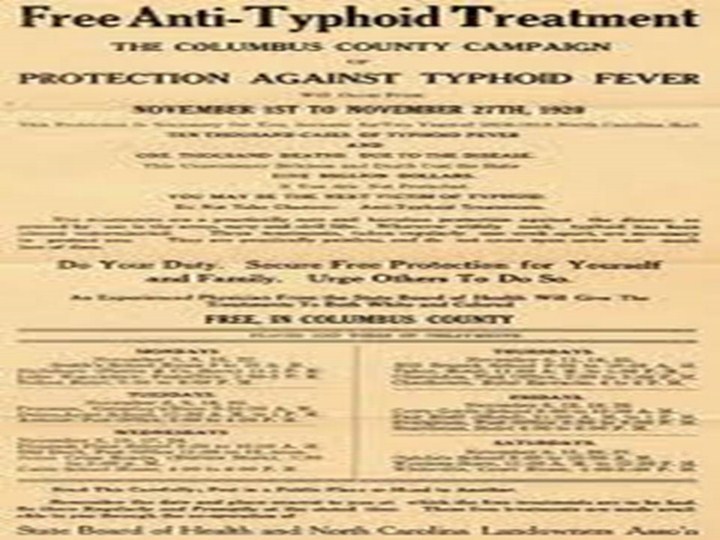 |
Flying insects feeding on feces may occasionally transfer the bacteria
through poor hygiene habits and public sanitation conditions. Public
education campaigns encouraging people to wash their hands after defecating
and before handling food are an important component in controlling spread of
the disease. According to statistics from the United States Center for
Disease Control, the chlorination of drinking water has led to dramatic
decreases in the transmission of typhoid fever in the U.S. During the
colonial period in American history there was no such treatment available so
typhoid fever was a frequent killer.
|
